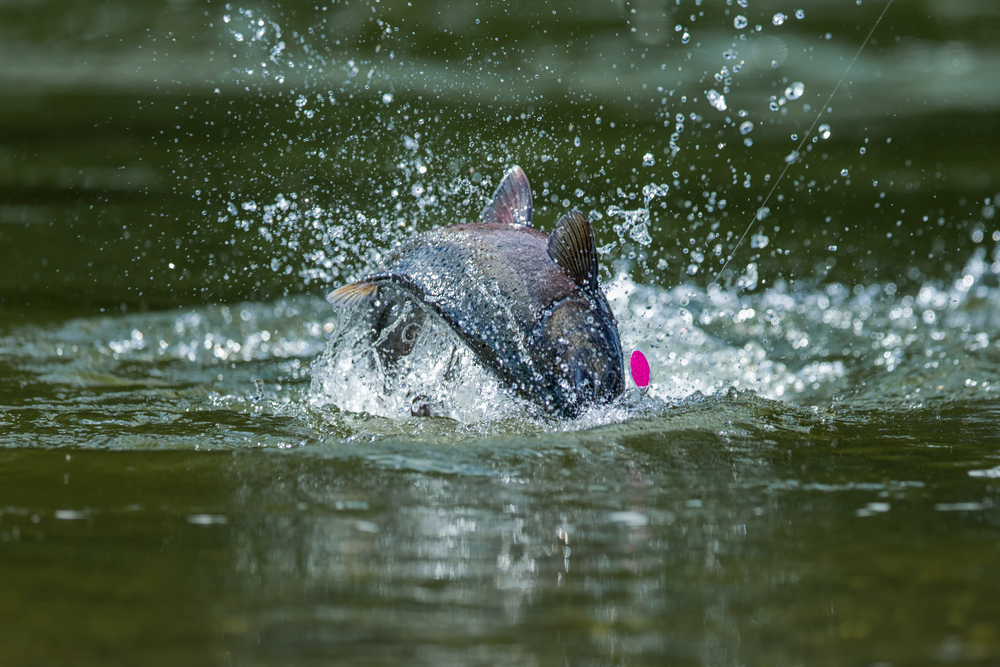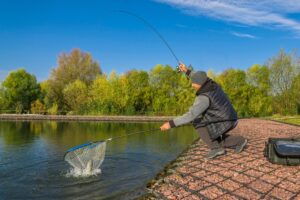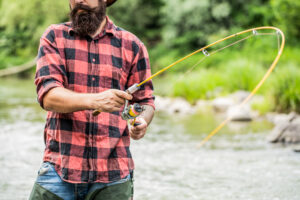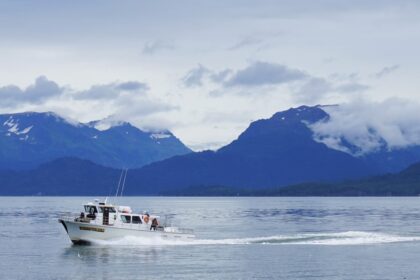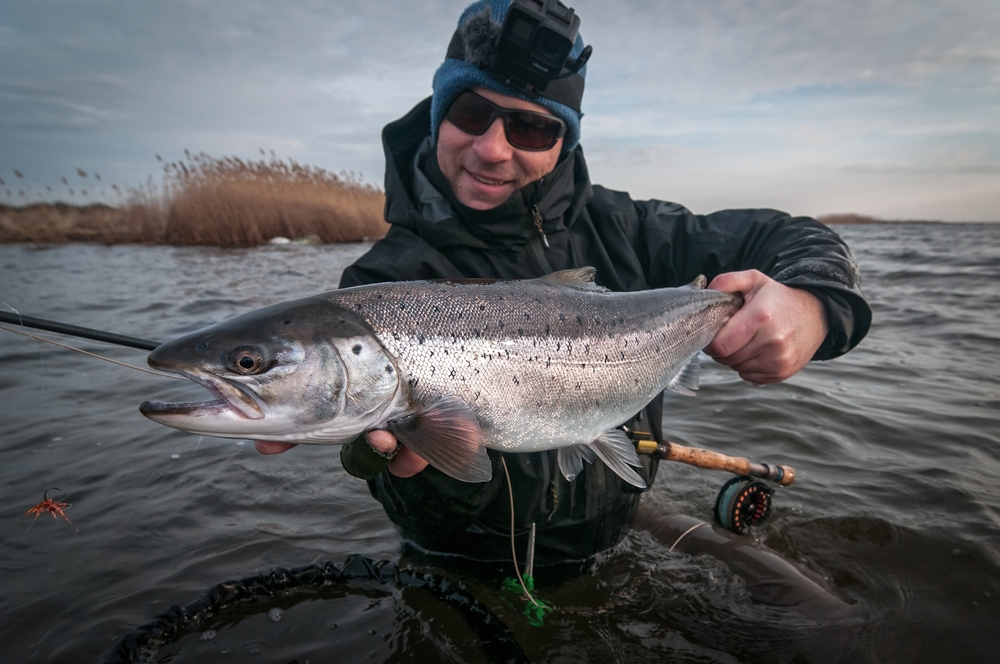
Are you looking to go fishing for lake trout this season? If so, you’ve come to the right place.
Bubble rigs use a water-weighted plastic bubble to ensure sufficient casting weight for shoreline trout fishing. They allow you to use similar equipment as you would with artificial lures, but with enough buoyancy to cast like a fly rod.
In the following sections, we’ll look at everything you need to know about fishing for lake trout using bubble rigs and even discuss the pros and cons of each rig setup for this type of fishing.

Everything You Need for Fishing for Lake Trout
You can’t catch lake trout without the right equipment. We suggest the following:
- Rod — Bubble techniques often call for an ultralight spinning rod. However, some anglers prefer 1.5-meter rods when fishing in streams with overgrown banks and choose 2.4-meter models in wider lakes and rivers. Just make sure the rod comes with a fast-action tip.
- Reel — Spinning reels are preferable for bubble fishing. Make sure the bail and retrieving action are operating smoothly. Plus, decent drag to deal with the light lines.
- Line weight — Opt for lines between four to six pounds. Some anglers favor even lighter lines.
- Plastic bubble — Teardrop-shaped bubbles are most common, with the fatter end facing the rod. But you can use a tapered bubble and even a spherical one if you’d rather.
- Leader — In general, utilize a 1.8-meter leader for wet flies and a 2.7-meter version for dry flies.
- Flies — You should “match the hatch” with the sort of fly the trout in your area are feeding on.
- Nymphs — Again, match the nymphs with the fly types eaten by the trout near you.
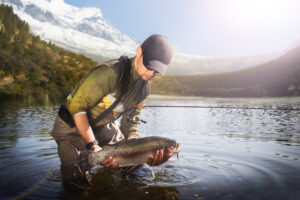
How to Set Up a Bubble Rig
Once you’ve gathered your equipment, it’s time to set up your trout fishing bubble rig. There are three types to choose from:
- Tough bubble rig
- Torpedo float rig
- Adjusta bubble rig
Each one is used for different circumstances. However, the Adjusta method is most often utilized because it’s the easiest to set up in ever-changing conditions.
Find out how to get started with the Adjusta bubble rig here:
- First, thread the end of the rod’s fishing line through the narrower end of the Adjusta bubble.
- Attach the shock leader (if desired) using a double uni-knot.
- Attach the leader or tippet to the shock leader using the same knot.
- Determine your line length.
- Position the Adjusta bubble along the line to the desired length.
- Pull the rubber stopper and twist to secure the bubble to the fishing line.
- Add lure, and you’re ready to cast!
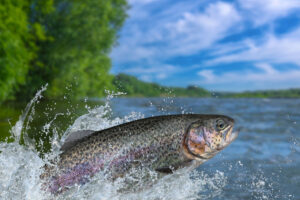
How to Cast for Fishing for Lake Trout
Speaking of casting, here’s the best way to do it when fishing for lake trout:
- Sidearm cast — This will stop the leader from catching on overhead branches or snapping. Plus, it’ll allow the bubble to lead the fly.
- Count down the fly — Submerged flies should drop to around five or ten feet before retrieval.
- Slow retrieve — Flies on or near the surface must be presented like they’re drifting toward the shore with the current. When submerged, a stop-and-go action is necessary.
- Watch the bubble — If the bubble dips or bobs sharply, a fish has taken the bait.
- Set hook — If you fail to set it, return to the slow retrieve step and try again.

The Pros and Cons of Each Rig for Fishing for Lake Trout
Now you know the basics, let’s look at the pros and cons of each trout fishing rig. They come with unique advantages and disadvantages and should each be used in different scenarios:
Fixed Bobber Rigs
It’s the simplest trout rig. It displays a fixed bobber attached to the line, plus a sinker and hook.
We recommend fixed bobber rigs for shallow ponds and streams, as well as near the shorelines of larger lakes. If trout are feeding close to the surface, you’ll find success with this method.
|
|
Slip Bobber Rigs
Another standard rig, it’s more compact than a fixed bobber situation. Not to mention that it’s easier to cast!
It’s the best option when trout are feeding in midwater and when you can’t reach potential catches with a fixed bobber or bottom fishing rig.
|
|
Slip Sinker Rigs
It’s the most straightforward bottom fishing rig taught to novice anglers. Performed for over a century, it’s one of the most high-performing trout rigs.
Typically, this method is best in lakes where trout stay deeper than five or ten feet. Since you can cast it ultra far, it’s fantastic for shoreline fishing. Just make sure you use floating bait; otherwise, your hook will lie on the lakebed where the trout can’t see it.
|
|
Carolina Rigs
Consider the Carolina rig a slip sinker setup with artificial lures instead of bait. It works wonders when trout are feeding toward the lake’s bottom.
|
|
Slip Shot Rigs
Slip shot rigs are a take on the Carolina setup. Instead of using a sliding sinker, you use one or more split shots on the line. Why? Because trout can be finicky, and the slip shot rig is much harder to spot in clearer waters.
|
|
The Bottom Line
Hopefully, you’ve found the answers to your fishing for lake trout questions here! Different rigs are suited for different situations, and now you’re more than ready to pick the one that’s perfect for your circumstances.

